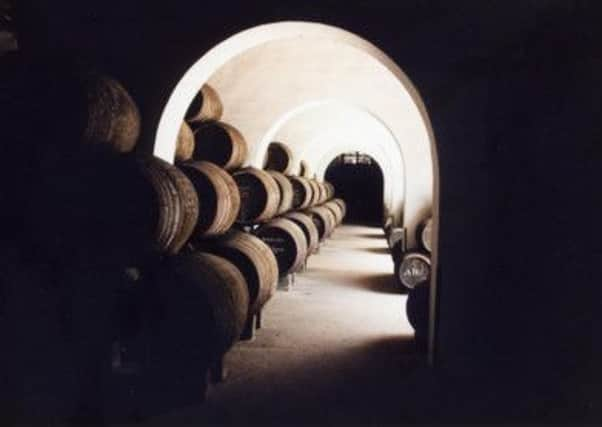Wine Club: Super store performers


Most supermarket tastings are big affairs – the sort where I turn up to a large venue, with tables lined up, groaning under a hundred or more bottles of wine.
Usually allocating several hours to the task I work through the lot, often in the company of a dozen or so other wine writers, in semi-silence, slurping and spitting my way through them, making notes along the way.
Advertisement
Hide AdAdvertisement
Hide AdIn the last couple of weeks two totally different supermarket invitations landed in my inbox. The first, from Tesco: “Would I like to have dinner with members of the buying team and taste some of their Finest range to see how they match with food?” The answer has to be ‘yes’. The second invitation was from Sainsbury’s to a limited tasting of just 25 new wines, which are just about to go on the shelves. Again the answer was yes. Small, bite-sized tastings bring the wines into sharper focus and provide a chance to talk to the buyers about the whole process of getting the wines from source to shelf with the best flavours for money inside the bottle. Both tastings were too good to miss.
Tesco started its Finest brand 15 years ago. Like any supermarket, an own-label brand gives buyers the chance to find wines that they can blend, label and call their own without dealing with brand name owners who may have a particular agenda for the brand. In short, an own label is often one of the best value wines in a supermarket’s range. The ‘Finest’ range makes a clear statement. They are specially selected parcels of wine, and they provide Tesco with the opportunity to bring in fresh ideas and flavours. “Finest Prosecco is our biggest-selling line,” said Master of Wine Laura Jewel, who heads up the buying team at Tesco. “We sell around 1.5m bottles of that line.” Apart from that breath-taking number and the fact that this one wine alone would stretch from Leeds to London and halfway back again, it is equally impressive that the quality remains high. “All our Finest wines are bottled at source, and there is only one wine where we need two suppliers to keep up with sales.” Which one is that? “Chablis – the demand for this wine is too high for just one supplier.”
Dinner started with a chilled glass of Finest Manzanilla (£6.40 for 50cl), a wine that I marked high at the last big tasting. It is sourced from Bodegas Barbadillo, based in Sanlucar de Barrameda, the coastal town where all Manzanilla must be matured. Here the cool sea breezes moderate growth of flor that covers the surface of the maturing Manzanilla in the barrels, creating dry, almost salty flavours in the wine. At just 15 per cent alcohol, this is a fabulous, taste-bud wakening aperitif.
A smoked duck and beetroot starter went well with the lifted cherry fruit of Finest Marlborough Pinot Noir, sourced from Yealands Estate 2012 (£10.99). This windy estate is in the Awatere Valley and is steadily making a reputation for itself, under its own label (Latitude in Leeds stocks the Yealands range) and under the Tesco label.
Advertisement
Hide AdAdvertisement
Hide AdI also tried the Finest Godello 2012 (£8.99) from a co-operative in Galicia in north west Spain which echoes some of the apricot notes of Albariño but also has a distinct, fresh-tasting minerally character. This was slightly overpowered by the duck but it went well with Dorset crab salad.
With rosemary and garlic-spiked Cumbrian lamb, two wines were poured. Finest Douro 2012 (£6) I have generally liked for its robust, deep black fruits with just an edge of tannin to help it stand up to food, but on this occasion it was outshone by Finest Bolgheri 2010 (£11.99), a super-Tuscan style made from classic Bordeaux grapes, Cabernet Sauvignon, Merlot and Cabernet Franc. Sourced from the family-owned Piccini Estate, it mustered the deep, silky fruit expected from those grapes with a layer of Italian complexity and a dusting of hillside herbs.
I would have thought that a sticky toffee pudding would drown out an Australian Semillon but the gold-medal winning Finest Dessert Semillon 2008 (£6.79 for 37.5cl) from De Bortoli stood up well to the pud, providing just enough cleansing freshness to balance the dish.
In all this was a tremendous showing for a range of wines which might just be dismissed as ‘supermarket own’. Until March 18, if you buy any four bottles of Tesco Finest wines, you save 20 per cent. Use this terrific offer to explore the range.
Advertisement
Hide AdAdvertisement
Hide AdOver at Sainsbury’s the range was also own-label wines, this time all sourced from the Southern Hemisphere. Winemakers’ Selection is a relatively new introduction, aimed as a midpoint between the House range of wines and the undoubtedly successful Taste the Difference range. To keep prices keen, most of Winemaker’s Selection from the Southern Hemisphere has been shipped in bulk and bottled in the UK which very sensibly avoids sending glass bottles halfway around the world. I sometimes find that top notes of quality are lost in the transport, but there were plenty of wines that presented well and full of flavour. Among the whites I enjoyed Winemakers’ Selection Semillon Chardonnay 2013 from South East Australia (£6). Clean with bright, lime fruit layered with rounded Chardonnay, it has enough substance to accompany a lightly spiced stir-fry or a honey and lemon baked chicken. Also good were Winemaker’s Selection Marlborough Sauvignon Blanc 2013 (£7) with breezy, gooseberry and herbaceous notes and Limestone Coast Chardonnay (£6) for its clear, rounded, uncluttered fruit. Top reds include the chunky, blackberry-filled Winemakers Selection Malbec 2013 at a bargain (£4.99), and the Argentinian Shiraz Malbec 2012 blend (£5.99) which added more spicy notes as well as a touch more food-friendly structure.